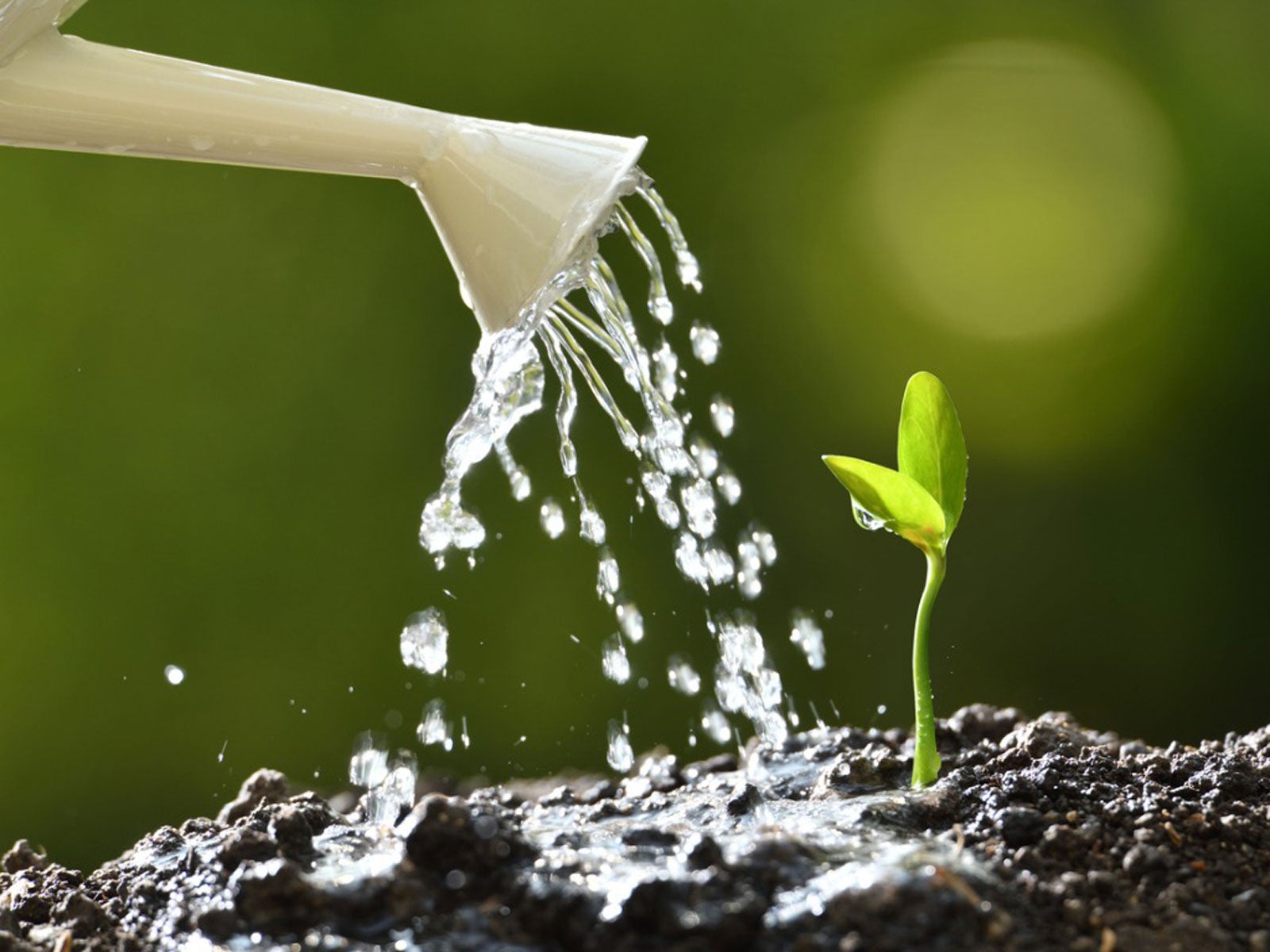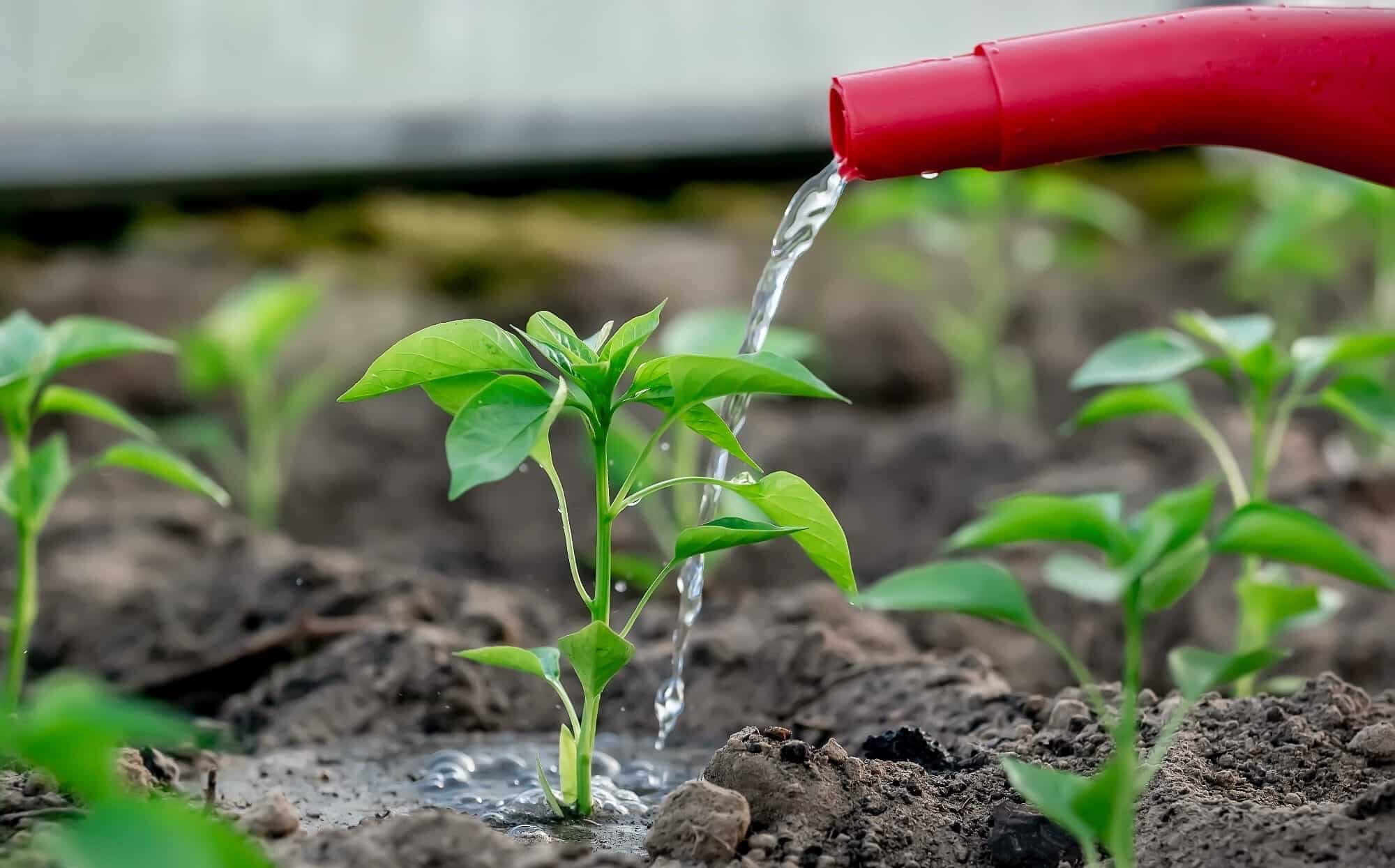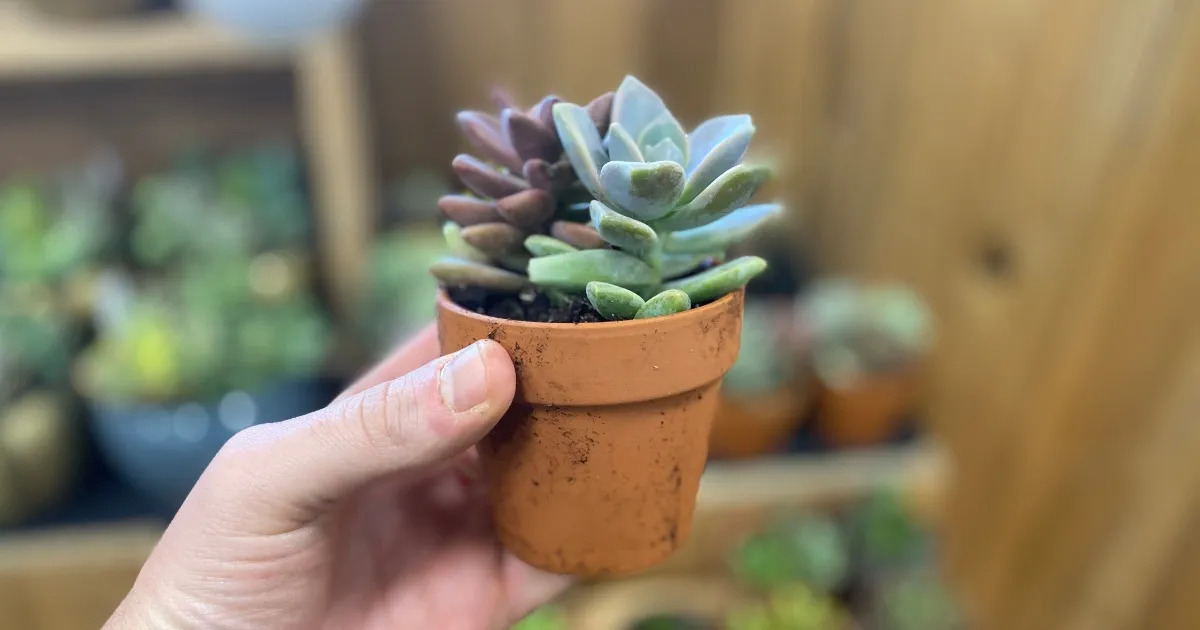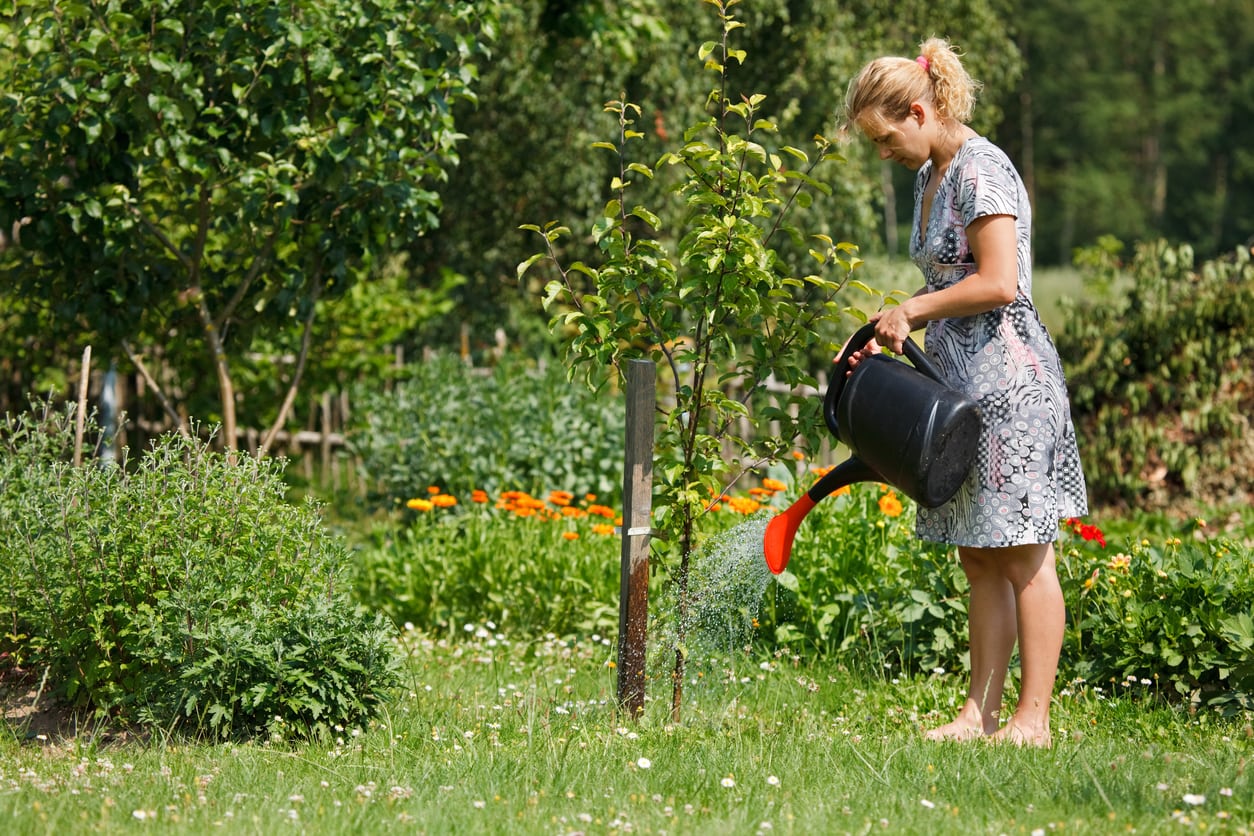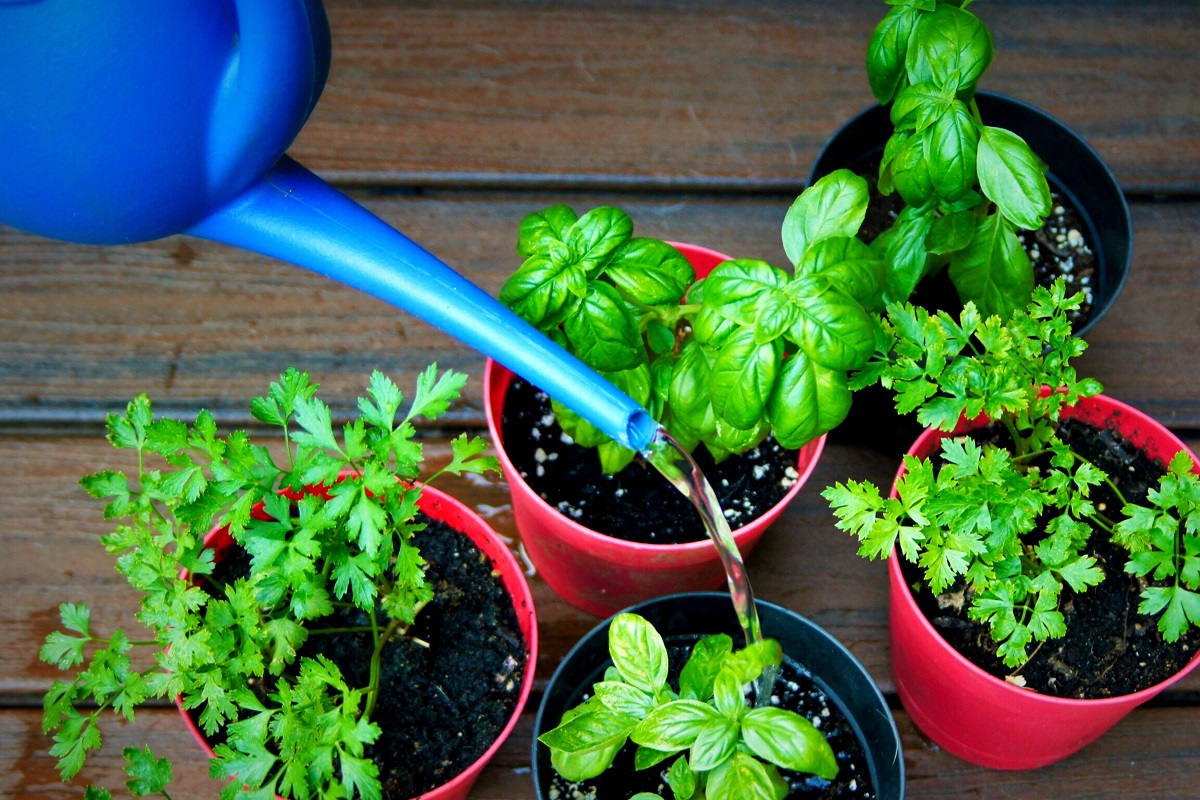Home>Gardening Techniques>Plant Care>How Often To Water Shrubs


Plant Care
How Often To Water Shrubs
Modified: January 22, 2024
Discover the best plant care tips for watering shrubs. Learn how often to water your shrubs to keep them healthy and thriving.
(Many of the links in this article redirect to a specific reviewed product. Your purchase of these products through affiliate links helps to generate commission for Chicagolandgardening.com, at no extra cost. Learn more)
Table of Contents
Introduction
Welcome to the world of plant care, where the beauty and health of your shrubs take center stage. Keeping your shrubs vibrant and thriving requires a deep understanding of their needs, including the essential task of watering. While some may think that watering shrubs is a simple process, it actually requires careful consideration and proper technique to ensure optimal growth and longevity.
Watering shrubs at the right time and in the right amount is crucial for maintaining their health. Overwatering can lead to root rot and other diseases, while underwatering can cause stress and dehydration. Each type of shrub has its own specific watering requirements, which are influenced by various factors such as the climate, soil conditions, and the plant’s stage of growth.
In this comprehensive guide, we will explore how often to water shrubs, taking into account the factors to consider, different types of shrubs, environmental conditions, signs of watering needs, and effective watering techniques. By understanding these key elements, you will be equipped with the knowledge to provide the best care for your shrubs and ensure their long-term vitality.
Factors to Consider
When it comes to watering your shrubs, there are several important factors to consider to ensure you provide them with the right amount of water:
- Plant Type: Different shrubs have different water requirements. Some shrubs, like hydrangeas, prefer moist soil, while others, like cacti, thrive in drier conditions. Familiarize yourself with the specific needs of each type of shrub in your garden.
- Soil Type and Drainage: The type of soil in your garden can significantly impact how often your shrubs need watering. Sandy soils tend to drain water quickly, requiring more frequent watering, while clay soils retain water longer, so less frequent watering is necessary.
- Climate and Weather: The climate of your region plays a significant role in determining your watering schedule. Hot and dry climates will require more frequent watering, while cooler or more humid climates may require less frequent watering.
- Shrub Age and Stage of Growth: Newly planted shrubs require more frequent watering until their root systems establish themselves. Mature shrubs generally require less water once their roots have spread out. Consider the growth stage of your shrubs when determining their watering needs.
- Time of Year: The time of year affects how often you should water your shrubs. During the warmer months of spring and summer, shrubs may need more frequent watering due to increased evaporation. In contrast, during cooler months, watering can be reduced.
By taking these factors into account, you can create a customized watering schedule that meets the specific needs of your shrubs. Regular observation and adjustment may be necessary to ensure optimal hydration for your plants.
Types of Shrubs
Shrubs come in a wide variety of shapes, sizes, and foliage, each with its own unique watering requirements. Understanding the characteristics of different types of shrubs can help you tailor your watering approach to meet their specific needs. Here are some common types of shrubs and their general watering preferences:
- Flowering Shrubs: Flowering shrubs, such as roses, azaleas, and hydrangeas, are prized for their beautiful blooms. They generally prefer moist soil and benefit from regular deep watering to promote healthy growth and abundant flowers.
- Evergreen Shrubs: Evergreen shrubs, like boxwoods, junipers, and hollies, retain their green foliage year-round and require consistent moisture. Water deeply and less frequently to reach their deep root systems.
- Deciduous Shrubs: Deciduous shrubs, such as forsythias, lilacs, and spireas, lose their leaves in winter and go dormant. They typically need regular watering during the growing season and less watering during dormancy.
- Drought-Tolerant Shrubs: Drought-tolerant shrubs, like lavender, sage, and yucca, have adapted to survive in dry conditions. They require less frequent watering once established and prefer well-drained soil.
- Native Shrubs: Native shrubs are well-suited to the local climate and soil conditions. They often require less watering and maintenance once established, as they are naturally adapted to the region’s environment.
Remember that these are general guidelines, and the specific watering needs of individual shrubs can vary. Consult plant care guides or seek advice from local gardening experts for more detailed information on the watering requirements of specific shrub varieties in your area.
Environmental Conditions
Understanding the environmental conditions in your garden is essential for effectively watering your shrubs. Several factors can influence how often and how much water your shrubs require:
- Temperature: High temperatures increase the rate of evaporation, meaning your shrubs may need more frequent watering during hot spells. Conversely, cooler temperatures can slow down evaporation, necessitating less water.
- Humidity: High humidity levels can help slow down water loss from your shrubs’ leaves and soil. In humid climates, you may need to adjust your watering schedule accordingly.
- Sunlight: The amount of sunlight your shrubs receive can affect their water needs. Shrubs in full sun may require more frequent watering than those in partial shade, as the sun’s rays can quickly dry out the soil.
- Wind: Wind can also contribute to water loss from shrubs. Windy conditions can increase evaporation rates and cause moisture to be extracted from the leaves more rapidly, resulting in drier soil. In windy areas, you may need to water more frequently.
- Rainfall: Consider the amount and frequency of rainfall in your area. If your region experiences regular rainfall, you may need to adjust your watering schedule accordingly, reducing or skipping watering sessions.
- Soil Moisture: Assessing the soil moisture is crucial for determining when to water your shrubs. Use a moisture meter or simply dig into the soil to check the moisture level. Avoid watering if the soil is already adequately moist.
By monitoring these environmental conditions and making adjustments to your watering routine, you can ensure your shrubs receive the right amount of water to thrive in their specific surroundings.
Signs of Watering Needs
Knowing when your shrubs need watering is crucial for preventing under- or overwatering. While each type of shrub may exhibit slightly different signs of thirst, here are some common indicators to look out for:
- Wilting Leaves: Shrubs with drooping or wilting leaves, especially during the early morning or late afternoon, may be signaling a need for water. However, keep in mind that wilting can also be a sign of overwatering, so consider other factors before reaching for the watering can.
- Yellowing or Browning Leaves: Shrubs with yellow or brown leaves, particularly those that are crispy or dry to the touch, may be suffering from dehydration. Adjust your watering schedule to provide them with more moisture.
- Stunted Growth: Shrubs that are not growing as vigorously as usual or exhibiting limited new growth may be lacking water. Proper hydration is essential for promoting healthy growth and development.
- Cracking or Drying of Soil: Check the soil around your shrubs. If it appears cracked, hardened, or dry to the touch, it’s a clear indication that your shrubs need water. Moist soil should feel slightly damp and crumble easily.
- Shriveling or Drooping Fruits: If you have fruit-bearing shrubs, monitor the condition of the fruit. Shriveling or drooping fruits may indicate insufficient water supply for proper fruit development.
- Increased Pest Activity: Inadequately watered shrubs can become weakened, making them more susceptible to pest infestations. Increased pest activity, such as an influx of aphids or spider mites, may indicate a watering issue.
It’s important to note that these signs can also be indicative of other issues, such as nutrient deficiencies or diseases. Therefore, it’s crucial to consider multiple factors and rule out other potential causes before adjusting your watering routine.
How Often to Water Established Shrubs
Established shrubs generally have a well-developed root system that allows them to access water from a larger area of soil. This reduces their reliance on frequent watering compared to newly planted shrubs. Here are some general guidelines for watering established shrubs:
- Deep Watering: Instead of frequent shallow watering, it’s important to water established shrubs deeply. This encourages the roots to grow deeper into the soil, making them more resilient to drought conditions. Aim for a slow, deep watering session that penetrates the soil at least 6 to 8 inches.
- Infrequent Watering: Established shrubs typically require watering once every 7 to 14 days, depending on factors such as soil type, climate, and season. However, it’s essential to assess the soil moisture level before watering. If the soil is still slightly moist, it’s best to delay watering until it dries out a bit.
- Watering Schedule: To determine the watering frequency, observe your shrubs regularly and consider the environmental conditions. Adjust the schedule based on signs of watering needs mentioned earlier, such as wilting leaves or dry soil.
- Watering Methods: Use efficient watering methods to minimize water waste. Drip irrigation or soaker hoses placed at the base of the shrubs allow water to directly reach the roots, reducing evaporation. Mulching also helps retain moisture in the soil and prevents weed growth.
- Rainwater Utilization: Take advantage of natural rainfall to supplement your watering routine. If your region receives sufficient rainfall, you may need to adjust your watering schedule accordingly. However, keep in mind that heavy rains can still create waterlogged conditions, so monitor the soil moisture level to avoid overwatering.
Remember that these are general recommendations, and individual shrubs may have specific watering needs based on their type and environmental conditions. Regular observation and adjustment are key to maintaining the proper hydration of established shrubs.
Watering Techniques
Watering your shrubs properly involves more than just the frequency and quantity of water. The way you water can significantly impact their health and growth. Here are some effective watering techniques to consider:
- Deep Root Watering: Water the soil around the shrub deeply, aiming for the root zone. This encourages the roots to grow deeply into the soil and helps establish a strong root system. Avoid shallow watering, as it promotes shallow root growth and makes shrubs more susceptible to drought.
- Soil Saturation: Ensure that the water penetrates the soil adequately and reaches the roots. Water slowly and deeply, allowing the soil to absorb the water gradually without causing runoff. This allows the roots to efficiently absorb the moisture.
- Watering at the Base: Direct the water around the base of the shrub, near the root system. Avoid overhead watering, as it can encourage fungal diseases and waste water through evaporation. Drip irrigation or soaker hoses are excellent options for delivering water directly to the root zone.
- Watering in the Morning: Watering early in the morning is generally the best time, as it allows the foliage to dry out during the day. This reduces the risk of fungal diseases and minimizes moisture loss due to evaporation. Avoid watering in the evening, as it can create a damp environment ideal for disease development.
- Watering Consistently: Be consistent with your watering schedule to create a stable and predictable environment for your shrubs. Avoid drastic fluctuations in watering frequency, as this can stress the plants and negatively affect their growth.
- Check Soil Moisture: Regularly check the soil moisture level around your shrubs. Use a moisture meter or simply dig a few inches into the soil to assess its dampness. Adjust your watering schedule based on the moisture level, ensuring that the soil is neither too dry nor waterlogged.
By implementing these watering techniques, you can promote healthy root development, minimize water waste, and provide optimal hydration for your shrubs.
Best Practices for Watering Shrubs
To ensure the best care for your shrubs and optimize their water intake, consider following these best practices:
- Know Your Shrubs: Understanding the specific watering requirements of each type of shrub in your garden is crucial. Research and familiarize yourself with the needs of your shrubs to provide the appropriate amount of water.
- Observe and Adjust: Regularly observe your shrubs for signs of watering needs, such as wilting leaves or dry soil. Adjust your watering frequency and quantity based on these observations and the environmental conditions.
- Water Deeply: Deep watering encourages deep root growth, making shrubs more resilient to drought conditions. Ensure that the water reaches at least 6 to 8 inches into the soil for established shrubs.
- Avoid Overwatering: Overwatering can lead to root rot and other diseases. Provide water only when necessary and check the soil moisture level before watering. Avoid watering if the soil is already adequately moist.
- Mulch: Apply a layer of organic mulch around the base of your shrubs to help retain moisture in the soil, regulate soil temperature, and suppress weed growth. Keep the mulch a few inches away from the trunk to prevent rot.
- Water in the Morning: Water your shrubs early in the morning to allow the foliage to dry out during the day. This reduces the risk of fungal diseases and minimizes evaporation loss.
- Utilize Rainwater: Collect and utilize rainwater for watering your shrubs whenever possible. Rainwater is free of chemicals and has a balanced pH, which can benefit your shrubs’ health.
- Monitor Environmental Conditions: Stay aware of the climate, temperature, humidity, and other factors that can affect your shrubs’ watering needs. Adjust your watering schedule accordingly to accommodate changing conditions.
- Regular Maintenance: Proper maintenance, including pruning, weeding, and removing dead or diseased branches, can improve airflow and moisture penetration to the shrub’s root system.
- Seek Expert Advice: If you’re unsure about the specific watering needs of your shrubs or encountering difficulties, consult local gardening experts or plant care guides for guidance tailored to your region.
By implementing these best practices, you can ensure that your shrubs receive the proper amount of water and maintain their health and vitality.
Conclusion
Proper watering is a critical aspect of maintaining the health and beauty of your shrubs. Understanding the factors that influence watering needs, such as plant type, soil conditions, climate, and environmental factors, is essential for providing the right amount of water to your shrubs.
By observing signs of watering needs, adjusting watering techniques, and following best practices, you can optimize the watering regimen for your shrubs. Deep watering, watering at the base, and utilizing mulch are effective techniques to ensure efficient water absorption and reduce water waste.
Established shrubs generally require less frequent watering compared to newly planted ones. Regularly checking the soil moisture level and adjusting watering schedules accordingly are important practices to prevent under- or overwatering.
Remember to consider the specific needs of different types of shrubs and the unique environmental conditions of your garden. By staying attentive to the health of your shrubs and making necessary adjustments, you can promote optimal growth and longevity.
For more detailed information about watering requirements for specific shrub varieties, consult plant care guides or seek advice from local gardening experts. With the right watering practices, your shrubs will thrive and adorn your garden with their lush foliage, vibrant blooms, and enduring beauty.
